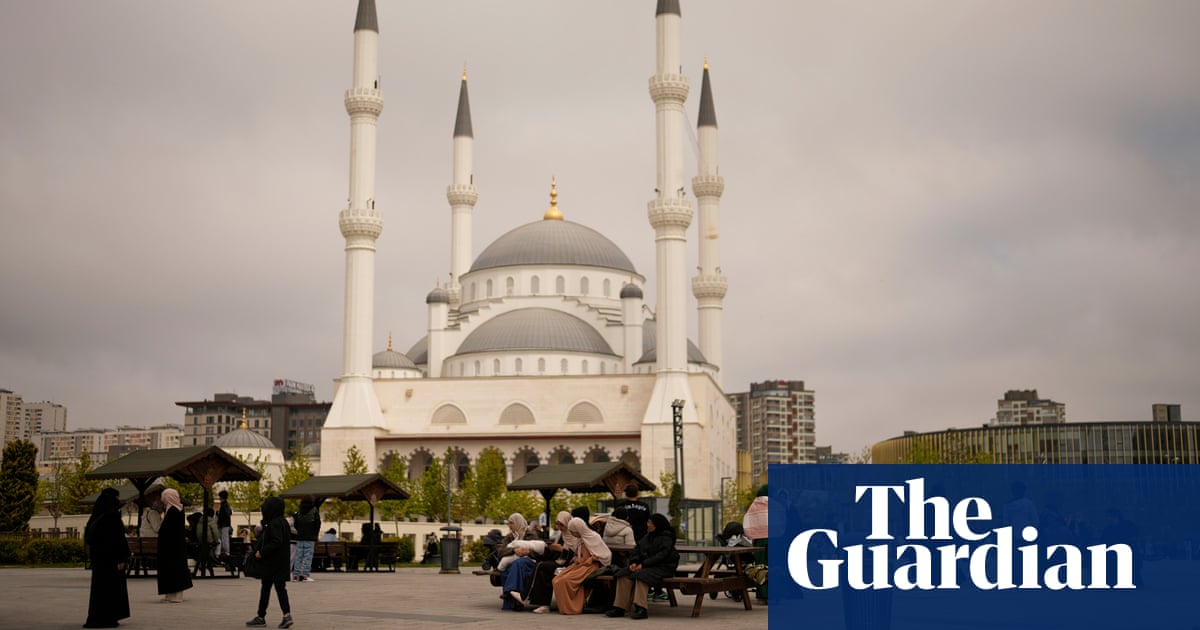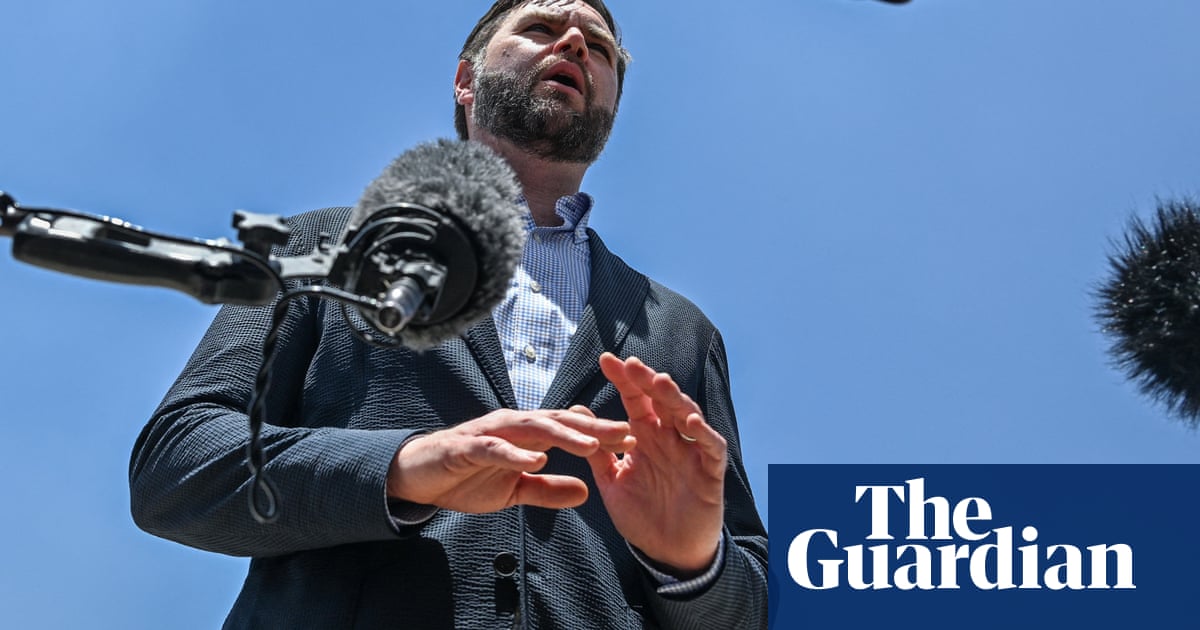The fence is five and a half metres high and bristles with jagged rolls of razor wire. Armed soldiers stand guard, surveying the snowy forest, still and silent on a frigid winter’s day. Cameras atop the fence are scanning the ground, sending footage back to the nearby HQ, which is on alert 24 hours a day.
The fence was not built to keep out an invading army, but people desperate to get to Europe. Once a checkpoint for cars and lorries, Poland’s border with Belarus is now a militarised zone: a steel and wire demonstration of the EU’s increasingly hardline stance towards undocumented people.
At the same site are anti-tank barriers, as the government tests elements of Eastern Shield, a system of fortifications, ditches and defences being built to guard against Russian aggression. Poland’s eastern frontier is now patrolled by 6,000 soldiers, 2,200 border guards and police.
“For our government the absolute top priority is the protection of our border and security of our territory,” said Maciej Duszczyk, an undersecretary of state at Poland’s interior ministry, while stressing the “humanitarian face” of the operation towards people trying to enter the country, such as search and rescue teams.
The 115-mile (186km) fence was built after Belarus’s dictator, Alexander Lukashenko, began luring people from the Middle East and Africa to his country in 2021 and busing them to the Polish border. Poland says it is under attack, facing “hybrid warfare” from its eastern neighbour, Lukashenko’s response to EU sanctions imposed on Belarus for crushing mass protests against his rule. The Podlaski Border Guard, which is responsible for manning Poland’s frontier with Belarus, reported 29,707 irregular crossings in 2024, higher than the two previous years.

The Guardian joined a group of about 60 journalists invited by the Polish government to visit the fence at Połowce-Pieszczatka, an area deep in a secure zone and off limits to anyone without a special permit.
The exclusion zone, which runs along a 38-mile stretch of the border, was reintroduced by Donald Tusk’s centre-right government in June. Officials say the restrictions stop people smugglers from collecting people at the border and driving them to other EU countries. Critics say the zone throws a veil of secrecy over how asylum seekers are treated and criminalises those trying to help them.
For visiting reporters, everything looked orderly, from the soft toys in cots in the empty foreigner registration centre, to the PowerPoint slides detailing asylum applications (2,685 in 2024 at that centre, which compares with 16,900 across Poland).
In the depths of the forested, often swampy terrain outside, however, people speak of a different reality. Dahir, a 17-year-old boy originally from Somalia, told Polish aid workers that he was shot with rubber bullets by Polish border guards as he attempted to cross the frontier last October. He and a Somali travelling companion were beaten and kicked, while a dog was set on a third Syrian man, he said.
Dahir said the group were strip-searched to their underwear and had phones and shoes confiscated and destroyed, before being forced to cross back to Belarus in a swampy area. Their pleas to file asylum claims were brutally dismissed: “They would hit us or punch us or kick us and this led us not to bring up a conversation with them further.” He said he was pushed back seven times from Poland to Belarus and twice from Latvia.
Dahir’s testimony is recounted in a report by the NGO We Are Monitoring, which describes pushbacks as “an everyday practice of the Polish border guard”. The report, which was published in English on Tuesday, is a grim tale of people forced into a harsh no man’s land between the Polish and Belarusian fences and spending days, even weeks, trapped in Europe’s last primeval forests without food or shelter.
Its 13 interviewees make allegations of Polish border guards restraining hands with zip ties, beating bodies, smashing phones, chasing people with dogs, pepper spraying faces, confiscating coats and shoes after strip-searches, and throwing people into swamps and rivers back over the border.

Duszczyk said people chose to return to Belarus because they did not want to seek asylum in Poland, preferring to try another clandestine entry. Under EU rules, an asylum seeker must claim protection in the first country they arrive in. “They don’t want to stay in Poland. They want to join families or employers in different countries,” the deputy minister added.
Pressed further on pushbacks, Duszczyk said: “We have to trust the border guards and soldiers. They do their job as well as possible. But it is a very difficult situation.”
The interior ministry did not respond to a request for further comment on specific allegations.
Uriel Mazzoli, the head of mission for Médecins Sans Frontières in Poland, described the claim of voluntary returns as “very inaccurate”, adding that most MSF patients were “very afraid” to be returned to Belarus. MSF has treated 442 people in more than two years at the border. The group encounters three kinds of ailment: direct physical assaults, such as injuries from rubber bullets and dog bites; injuries caused by the fence, such as falls or cuts from razor wire; and illnesses caused by the extreme and harsh environment, such as hypothermia, frostbite, gastrointestinal diseases and dehydration.
Anna Alboth, a cofounder of Grupa Granica (a coalition that encompasses We Are Monitoring), said she had met more than 100 people – men, women and children – who had experienced at least one pushback, with some reporting many more. Last September the Council of Europe’s commissioner for human rights called on Polish authorities “to put a stop to all summary returns to Belarus”, citing “credible allegations of isolated acts of misconduct” by some border guards.

Refugee groups have been bitterly disappointed by Tusk’s government, which ended the eight-year rule of the nationalist Law and Justice party (PiS). In opposition, Tusk accused PiS of wanting “to strip us of our humanity”. In office he sounded a harsher note, describing migration as “a question of the survival of our western civilisation”.
Policy has also hardened. The Tusk government passed a law allowing security forces to use lethal weapons with impunity when faced with a threat and has proposed temporary suspensions of the right to asylum.
The buffer zone was reintroduced last June after a young soldier was fatally stabbed by a man seeking to cross the border, a death mourned across Poland. “He gave his life for us, for our homeland,” said the president, Andrzej Duda, who attended the funeral.
Col Andrzej Stasiulewicz, the deputy commander of the Podlaski Border Guard division, said guards were facing “strong and high aggression” from people trying to enter Poland. He played a video clip that he said showed 80 people attempting to cross the border, nearly all armed with a club or piece of wood. Another video was said to show 240 people trying to enter by force. The journeys were “organised at every stage by Belarus”, he said.
Alboth said she had never encountered any aggression, but heard stories from asylum seekers that they were instructed to gather in groups by Belarusian officers and ordered to throw stones at the Polish fence, with threats of rape made against their wives for noncompliance. “From the refugee perspective, there is absolutely no reason to be aggressive towards Poland,” she said.
According to the Polish government, people trying to cross the border in 2024 came from 51 different countries, with the greatest numbers from Ethiopia, Eritrea, Somalia and Syria.
Mazzoli said there was “a manipulation of the narrative of hybrid warfare to justify the suspension of fundamental human rights”. The Polish government’s portrayal of the situation meant people fleeing war were considered as threats, but he added: “They are not soldiers, they are not weapons, they are people.”

.png) 2 months ago
21
2 months ago
21













































